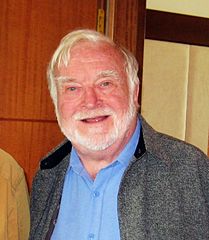"Luke, you're going to find that many of the truths we cling to depend greatly on our own point of view."
Obi-wan Kenobi
In our previous blog posts we shed light on how engagement and the flow experience can be created by gamified systems and applications. But this does not necessarily answer the question : what is fun for the individuals interfacing the experience? How can we figure out what are their motivations and their definition of fun?
For one thing it's very tempting to look at it very narrowly, and say that what is fun for most is fun for all. It's even more tempting to think that what is fun for us is fun for everybody.
However, if any of these hypotheses were true, why are there so many types of hobbies, pasttimes or games?
So this begs the question : can 'fun' be categorised? Can the participants (or better call them 'players') who are taking part in a gamified experience put into groups, and can we identify what are the motivations of a given group to take part?
Luckily, we can bring on research associated with early multiplayer games (called MUDs (Multi User Dungeons), text based multi-user adventure and role playing games) to help us determine what can be fun, and how we can categorise participants.
Richard Bartle, British writer, professor and game researcher (creator of the first MUD) used actual player feedback to try to determine what was fun for the early multiplayer gamers.
In his work, he identified four types of players, based on what they found fun in the game.
It's important to say that each player enjoyed a combination of factors in the game, so all of them was a little bit of each type, with one or two being the most dominant.
According to his research players' types can be determined based on their relation to two factors : action vs interaction and players vs environment.
Hence, the four player types are the following :
Socialiser : interacting, players
Explorers : interacting, environment
Achievers : acting, environment
Killers : acting, players
The four types can probably best described by the following picture :
What each type of player enjoys is different :
- Socialisers enjoy meeting new people and talking to them, for them the environment (the game) is just a backdrop to meet and engage with interesting people
- Explorers like discovering as many things as possible about the game, turning every stone, exploring every nook and crany, and being proud that they know the most about the game
- Achievers must always collect all the points, achievements that is possible in the game, and be the best in the most quantifiable categories
- Killers have to beat other players to have enjoyment and satisfaction, and be able to brag about their accomplishments
Based on the four types, we can make distinctions what is fun for our target group, and how we should build up our gamified experience.
We must taylor our gamification mechanics, based on the preferences of the target group, with the following examples of mechanics helping us to determine what we should use :
- Socialisers : Like, Comment, Give, Gift, Share, Greet
- Tools to engage : Newsfeeds (status updates), Friends Lists, Chat, Being able to give 'gifts'
- Explorers : View, Explore, Rate, Review, Curate, Vote
- Tools to engage : hidden pages, secret levels, exclusive content, undisclosed achievements
- Achievers : Win, Challenge, Create, Showoff, Compare
- Tools to engage : points, leaderboards, challenges
- Killers : Hack, Harass, Cheat, Heckle
- Tools to engage : leaderboards, ranks, head-to-head competitions
So what do you think, what are the major motivations in your target group?
How are you going to use any of the tools presented to engage people more?
Have you got any positive or negative experience, when the motivation was well placed or quite the opposite, it was totally misplaced?
About the author : Norbert Szigeti Csúcs is an online marketing, CRM and gamification expert with more than a decade experience working with global companies to create value. His latest endeavour is in the realm of gamification, as he does a lot of research at Aquilone Training and works with companies on the practical side of gamification to benefit their customers and employees.
About Aquilone Training : Business efficiency development by training, coaching and organizational development, working through corporate organizational maturity modelling.
Professional, rational, ethical.
Professional, rational, ethical.

